Do your eyes get tired and stressed when you look at the computer? Thinking of buying the best monitor for eye strain? Do you know what monitor to use so that your eyes do not hurt?
Buying a good monitor for your computer is important, especially if you are playing video games or watching movies. Your eyesight will thank you.
The most important thing to remember is that your eyesight can get tired when you are in front of a computer screen. This means that your eyes feel like they are burning, and those two black things on the front of them can get icky.
To avoid eye strain, it is important to buy a good monitor for your computer and follow these tips.
Table of Contents
Most Important
- Tired eyesight: You may have eye problems if you notice that your eyes are tearing, itching, or blurring. Usually, this will happen after the age of 40. cannot reverse this process, and it can be hard to focus on things without glasses or a good monitor.
- Eye strain: If you force your eyes a lot, they could get tired and give you discomfort. You might have headaches or blurry vision. This could happen at any time while your life, but it will only happen if you keep forcing them to do something they don’t want to do.
In both cases, you should not have your eyes fixed on the computer monitor. It would help if you did eye exercises from time to time (move the eye, focus, and blur points near and far).
It would help if you had a good monitor. Look away from the computer screen for 20 seconds after every 20 minutes and focus on something that is about 6 meters away. It will help if you blink often.
The 10 Best Monitor for Eye Strain
| Image | Product | Details | Price |
|---|---|---|---|
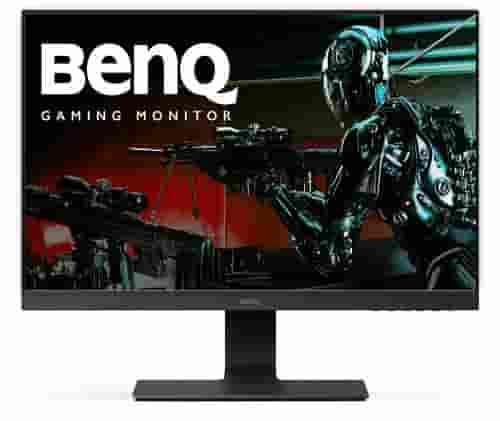 |
BenQ GL2580H | Screen size: 24.5 Inches Mounting type: Wall Mount Weight: 10.00 lbs Display Type: LED Dimensions: 16.5 x 6.5 x 22 inches Aspect ratio: 16:9 Refresh rate: 60 hertz Resolution: 1920×1080 Pixels |
Check Price |
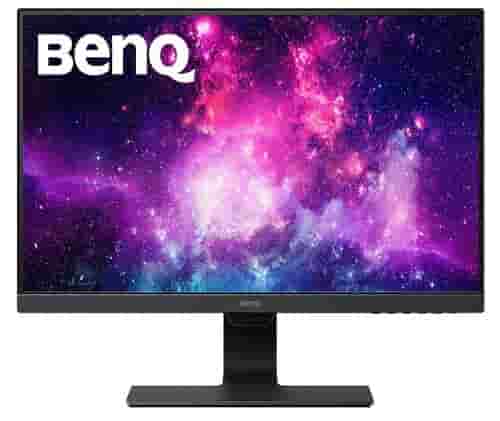 |
BenQ GW2780 | Screen size: 27 Inches Mounting type: Wall Mount Weight: 11.00 lbs Display Type: LED Dimensions: 18.23 x 7.2 x 24.09 inches Aspect ratio: 16:9 Refresh rate: 60 hertz Resolution: 1920×1080 Pixels Hardware Interface: VGA, DisplayPort, HDMI Color: Black |
Check Price |
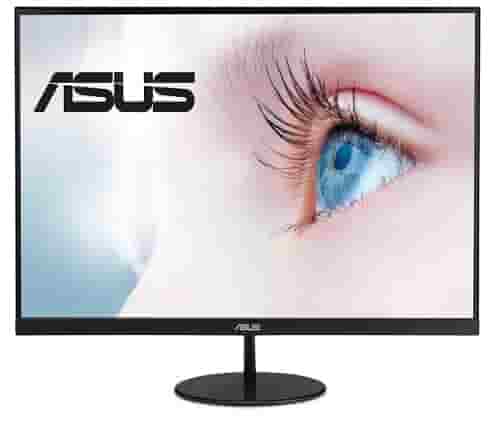 |
ASUS VL279HE | Screen size: 27 Inches Mounting type: Wall Mount Weight: 15.38 pounds Display Type: LED Dimensions: 24.17 x 8.2 x 17.23 inches Connectivity: D-Sub, HDMI Refresh rate: Up to 75Hz Resolution: 1920 x 1080 pixels Hardware Interface: HDMI Color: Black |
Check Price |
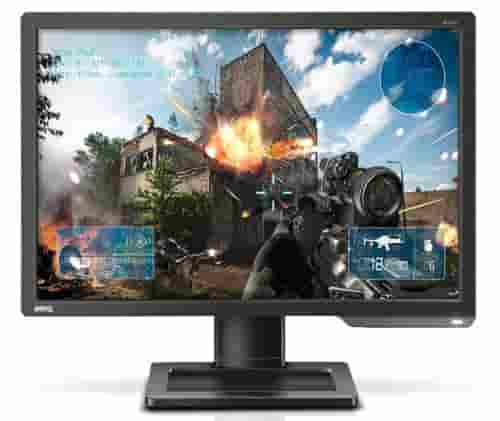 |
BenQ ZOWIE XL2411P | Screen size: 24 Inches Mounting type: Wall Mount Weight: 13.01 lbs Display Type: LCD Dimensions: 8.74 x 22.44 x 16.97 inches Connectivity: HDMI, DVI-d Refresh rate: 144 Hz Resolution: 1920 x 1080 pixels Hardware Interface: HDMI Color: Black |
Check Price |
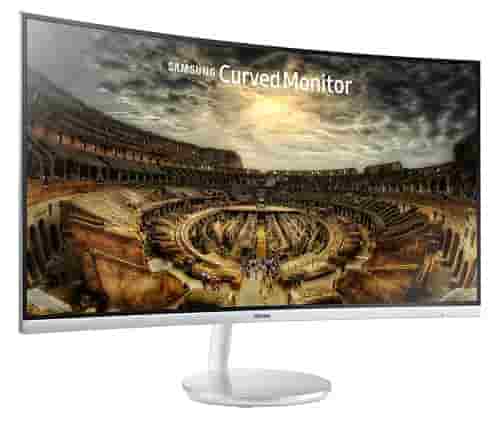 |
Samsung CF791 | Screen size: 34 inches Mounting type: Wall Mount Weight: 16.75 lbs Display Type: LED Dimensions: 6.57 x 31.83 x 14.28 inches Connectivity: USB Port, HDMI Refresh rate : 100h Hz Resolution: 3440 x 1440 Hardware Interface: HDMI Color: Black Response Time: 4ms |
Check Price |
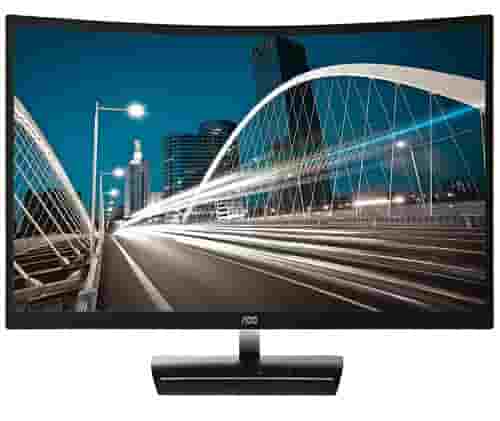 |
AOC C3583FQ | Screen size: 35 Inches Brightness: 300 cd/m2, Weight: 21.00 lbs Display Type: LED Dimensions: 38.6 x 11 x 24 inches Connectivity: VGA, DVI,(2) HDMI-MHL,(2) Display Port Refresh rate: 160hz Resolution: 2560 x 1080 @ 160hz Hardware Interface: VGA, HDMI Color: Black Response Time: 4ms Aspect Ratio: 21:9 |
Check Price |
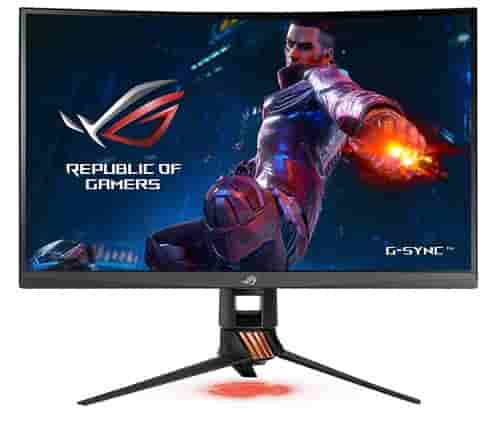 |
ASUS ROG Swift PG27VQ | Screen size: 27 Inches Brightness: 400 cd/㎡ Weight: 18.7 pounds Display Type: LCD Dimensions: 24.2 x 10.6 x 16.6 inches Connectivity: HDMI Refresh rate: 165hz Resolution: 2560×1440 Mounting type: Wall Mounting Response Time: 1ms Aspect Ratio: 16:9 |
Check Price |
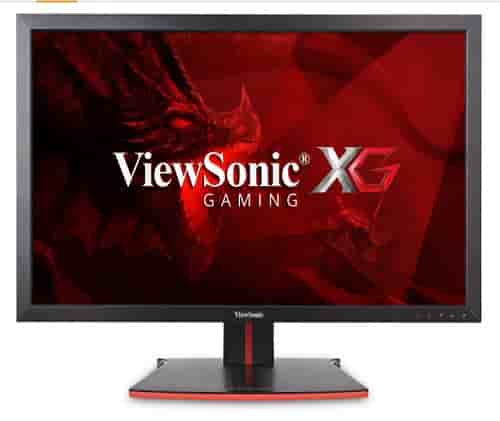 |
ViewSonic XG2700- 4K | Screen size: 27 Inches Brightness: 300 cd/㎡ Weight: 23.6 pounds Display Type: LED Dimensions: 9.1 x 25.3 x 21.9 inches Connectivity: HDMI, HDMI 2 Refresh rate: 144Hz Resolution: 3840 x 2160 pixels Hardware Interface: DisplayPort, HDMI Mounting type: VESA Wall Mounting Response Time: ultra-fast response time Aspect Ratio: 1.78:1 |
Check Price |
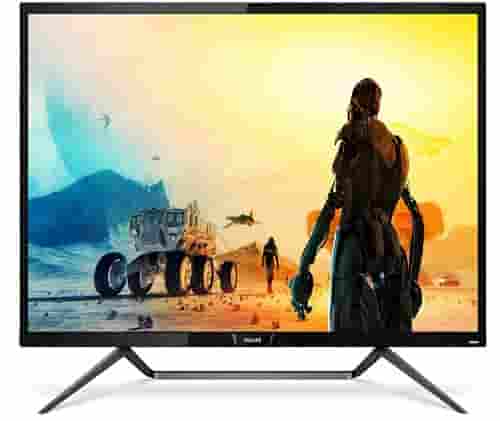 |
Philips 436M6VBPAB | Screen size: 43 Inches Brightness: 1000 nits Weight: 32.36 lbs Display Type: QLED Dimensions: 3840 x 2160 pixels Connectivity: USB type c, USB Port, Display Port 1.2, HDMI 2 Refresh rate: 60 hertz Resolution: 3840 x 2160 pixels Hardware Interface: USB Type C, HDMI, USB Port 3.0 Mounting type: Wall Mount Response Time: 4ms Aspect Ratio: 16:9 Color: Black Color |
Check Price |
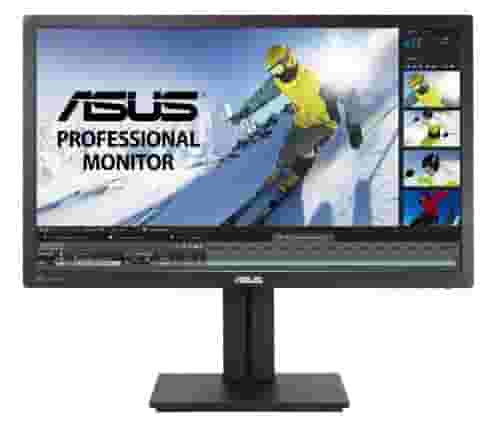 |
Asus PB278QV | Screen size: 27 Inches Viewing Angle: 178° Weight: 17.20 lbs Display Type: LED Dimensions: 25.32 x 21.74 x 8.58 inches Connectivity: Vga, Dvi, Hdmi, Hdmi 2 Refresh rate: 75 hertz Resolution: 2560 x 1440 pixels Hardware Interface: DisplayPort Mounting type: Wall Mount Response Time: 5ms Aspect Ratio: 16:9 Color: Black |
Check Price |
Which Best Monitor for Eye Strain to Buy?
If you spend a lot of time in front of the computer, your eyesight might be getting tired. It may be because your monitor does not have Flicker-Free technology. If this sounds like you, try buying a new monitor.
In this guide, we will help you choose the best monitor for your needs. We will tell you all about monitors.
BenQ GL2580H – Best Low Blue Light Monitor
| Screen size | : 24.5 Inches |
| Mounting type | : VESA Wall Mount 100×100 (mm) |
| Weight | : 10.00 lbs |
| Display Type | : LED |
| Dimensions | : 16.5 x 6.5 x 22 inches |
| Aspect ratio | : 16:9 |
| Refresh rate | : 60 hertz |
| Resolution | : 1920×1080 Pixels |
| Hardware Interface | : VGA Ports, D-Sub, DisplayPort, HDMI, DVI x 1 |
In the first place, we introduce you to what for us is the best monitor for eye strain on the market in terms of quality-price, the BenQ GL2580H. Some may not know the BenQ brand as much as others like Dell, Asus, or HP, but it has nothing to envy the other brands. We already talked about it in our frameless design best low blue light monitors article, and we also placed it at the top of our ranking.
This Eye-friendly monitor Ultra-slim modern design with beveled edges – Minimize distractions and create near-perfect multi-panel setups. Eye-care: low blue light and flicker-free technologies prevent eye strain and damage to vision. Fast 1ms response time (gtg): The fast 1ms response time enables smooth videos and an intense gaming experience. Full HD display – Enjoy impeccable picture quality thanks to 1920 x 1080 resolution. Cable Management System – Hide cables inside the monitor stand with ease.
We would highlight most about this best monitor because ignoring it using TN technology (more thought out in games) is the best option quality price on the market. If you plan to use the monitor you buy for years, decide on it without a doubt. Another of its most valuable points is its fast response time. Its screen is 25″.
REASONS TO BUY
- Very good response time 1 ms
- Advanced eye care
- FULL HD display
- Cable management system
- Automatic brightness adjustment
- It has EyeCare technology (ideal to avoid eye fatigue)
- Ultra-slim bezel design
- Very good value for money
REASONS TO AVOID
- It requires professional maintenance.
- Use TN technology instead of IPS.
- It does not come with built-in speakers.
BenQ GW2780 – Best Monitor to Reduce Eye Strain
| Screen size | : 27 Inches |
| Mounting type | : Wall Mount |
| Weight | : 11.00 lbs |
| Display Type | : LED |
| Dimensions | : 18.23 x 7.2 x 24.09 inches |
| Aspect ratio | : 16:9 |
| Refresh rate | : 60 hertz |
| Resolution | : 1920×1080 Pixels |
| Hardware Interface | : VGA, DisplayPort, HDMI |
| Color | : Black |
In the second position appears another monitor of the BenQ brand, the BenQ GW2780. This is a PC monitor with IPS technology and very good image quality.
It is similar to the BenQ GL2580H monitor, so it is also a fantastic option. Get this one if it comes out cheaper than the first one or if you want a monitor with integrated speakers. This BenQ eye-care monitor has the shortest response time of 5ms, so it reduces eye strain, and the screen size is 27″.
REASONS TO BUY
- 27″ display
- IPS Technology
- FULL HD display
- Automatic brightness adjustment
- It has Eye-Car technology (ideal to avoid eye fatigue)
- Very good value for money
- Integrated Speakers
REASONS TO AVOID
- Shortest response time 5ms
ASUS VL279HE – Best Blue Light Monitor
| Screen size | : 27 Inches |
| Mounting type | : Wall Mount |
| Weight | : 15.38 pounds |
| Display Type | : LED |
| Dimensions | : 24.17 x 8.2 x 17.23 inches |
| Connectivity | : D-Sub, HDMI |
| Refresh rate | : Up to 75Hz |
| Resolution | : 1920 x 1080 pixels |
| Hardware Interface | : HDMI |
| Color | : Black |
The latest PC monitor we are bringing you is the ASUS VL279HE. This is the best blue light monitor from the ASUS brand, which offers many different monitors, including this one.
We find it interesting that this ASUS VL279HE has an island that is un-framed and suitable for multi-monitor configurations. This product also works with the technology IPS. There are some points against the product, such as the lack of built-in speakers. The screen size is 27″.
REASONS TO BUY
- 27″ display
- IPS Technology
- FULL HD display
- It has Eye-Care technology (ideal to avoid eye fatigue)
- Very good value for money
REASONS TO AVOID
- No automatic brightness adjustment
- Does not come with built-in speakers
BenQ ZOWIE XL2411P – Best Gaming Monitor for Eye Strain
| Screen size | : 24 Inches |
| Mounting type | : Wall Mount |
| Weight | : 13.01 lbs |
| Display Type | : LCD |
| Dimensions | : 8.74 x 22.44 x 16.97 inches |
| Connectivity | : HDMI, DVI-d |
| Refresh rate | : 144 Hz |
| Resolution | : 1920 x 1080 pixels |
| Hardware Interface | : HDMI |
| Color | : Black |
BenQ ZOWIE XL2411P is the best gaming monitor for eye strain. It has a 1ms response time, 144hz refresh rate, DisplayPort, DVI-DL, HDMI connection ports, and headphone jack.
These are perfect for playing video games and relieving eye strain with their high refresh rates. This 24″ full HD monitor comes at a low price but has good quality.
Samsung CF791 – Best Curved Monitor for Eye Strain
| Screen size | : 34 inches |
| Mounting type | : Wall Mount |
| Weight | : 16.75 lbs |
| Display Type | : LED |
| Dimensions | : 6.57 x 31.83 x 14.28 inches |
| Connectivity | : USB Port, HDMI |
| Refresh rate | : 100h Hz |
| Resolution | : 3440 x 1440 |
| Hardware Interface | : HDMI |
| Color | : Black |
| Response Time | : 4ms |
UWQHD curved monitor, 3440 x 1440, with a 21:9 aspect ratio for work, editing tasks, and ultra-widescreen gaming. Curvature 1500R, contrast 3,000:1, 100 Hz frequency, Quantum Dot 16.7 million colors, Flicker-Free Technology.
Samsung Picture-by-Picture technology allows you to connect two video sources. AMD Freesync technology for smoother gaming. Adjustable support in inclination and adjustable height.
This best-curved monitor for eye strain doesn’t have 4K resolution, but almost and its pixel density and contrast is really good. And after a good calibration, this monitor will have a color similar to reality. It has a refresh rate of 100Hz and a spectacular 34″ display size.
The resolution and pixel density are perfect for reading text (they’re crisp and smooth), and being curved will give you a truly immersive gaming experience. The Samsung CF791 is an ultra-wide monitor that has no flaws. It’s perfect for both work and gaming.
AOC C3583FQ – Eye Strain Monitor
| Screen size | : 35 Inches |
| Brightness | : 300 cd/m2, |
| Weight | : 21.00 lbs |
| Display Type | : LED |
| Dimensions | : 38.6 x 11 x 24 inches |
| Connectivity | : VGA,DVI,(2) HDMI-MHL,(2) Display Port |
| Refresh rate | : 160hz |
| Resolution | : 2560 x 1080 @ 160hz |
| Hardware Interface | : VGA, HDMI |
| Color | : Black |
| Response Time | : 4ms |
| Aspect Ratio | : 21:9 |
The AOC C3583FQ is a huge 35-inch curved gaming monitor designed to give you a more immersive experience than you get from a flat screen.
It uses a Multi-Domain Vertical Alignment (MVA) panel to deliver rich and accurate colors and a 160Hz refresh rate and AMD FreeSync technology for smooth gameplay. You get a good selection of video inputs with this display panel technology.
Still, you can’t match the overall performance and full feature set of our Editor’s Pick for large and ultra-widescreen gaming monitors, the Acer Predator X34. But if you are looking to save some money, it is worth a look. This eye strain monitor built-in speakers and is compatible with Adaptive Sync, being therefore ideal for gaming.
ASUS ROG Swift PG27VQ – Best Monitor for Eyes
| Screen size | : 27 Inches |
| Brightness | : 400 cd/㎡ |
| Weight | : 18.7 pounds |
| Display Type | : LCD |
| Dimensions | : 24.2 x 10.6 x 16.6 inches |
| Connectivity | : HDMI |
| Refresh rate | : 165hz |
| Resolution | : 2560×1440 |
| Hardware Interface | : DisplayPort, HDMI |
| Mounting type | : VESA Wall Mounting |
| Response Time | : 1ms |
| Aspect Ratio | : 16:9 |
Do not define your gaming experience on a flat screen. Let the ASUS ROG Swift PG27VQ 27” Curved Gaming Monitor with Eye comforts give you double the depth, making it mesmerizing from any angle!
This best monitor for eyes is 27 inches wide and has a curved panel. This Asus Eye Care Technology monitor has a response time that is 1 millisecond, which means it feels like you are touching the screen. Can overclock it to 165 hertz. This is good for games because then they will be smooth and enjoyable.
ASUS Aura Sync is a type of lighting that has many colors. It can make different effects, and you can sync it to other ASUS Aura Sync products. The monitor has a 170 degrees viewing angle. DisplayPort 1.2 and HDMI 1.4 are available for connectivity options.
This monitor can move in different directions. It can tilt, swivel, and adjust its height. It also has a blue light filter and flicker-free technology backlighting that helps with eyestrain. It also has another feature: it can be mounted on walls. The ROG Swift PG27VQ Aura Sync gaming monitor is cool. It has a curved design. It also has RGB lights in sync with each other, and you can customize them how you want.
ViewSonic XG2700- 4K – Gaming Monitor with FreeSync Eye Care
| Screen size | : 27 Inches |
| Brightness | : 300 cd/㎡ |
| Weight | : 23.6 pounds |
| Display Type | : LED |
| Dimensions | : 9.1 x 25.3 x 21.9 inches |
| Connectivity | : HDMI, HDMI 2 |
| Refresh rate | : 144Hz |
| Resolution | : 3840 x 2160 pixels |
| Hardware Interface | : DisplayPort, HDMI |
| Mounting type | : VESA Wall Mounting |
| Response Time | : ultra-fast response time |
| Aspect Ratio | : 1.78:1 |
To win at video games, you need the best gaming monitor with FreeSync eye care. A ViewSonic XG2700 – 4K monitor is the perfect choice because it has a fast response time, 4k resolution, and high refresh rate, which will make your gameplay smoother than ever before!
This wonderful yet affordable monitor also comes equipped with AMD’s Free Sync technology for an excellent experience that can help you out in a battle to beat your friends.
You may want to consider an ergonomic stand. The comfortable use of this amazing device doesn’t have any chance to get delayed or interrupted by getting tired easily from uncomfortable positioning while playing on such a large screen. You can tilt it, which is good for your comfort level.
This best monitor for eye strain is perfect for gamers who crave a more immersive experience. It has black stabilization technology that makes it easier to see things in the dark and 178-degree viewing angles, so you can enjoy your games from multiple positions without losing clarity on any of them.
The XG2700-4K features an LCD monitor, power cable, mini DP to DP connector, and USB Port 3 Cable – all necessary for gaming excellence!
Philips 436M6VBPAB – Best Screen Resolution for Eyes
| Screen size | : 43 Inches |
| Brightness | : 1000 nits |
| Weight | : 32.36 lbs |
| Display Type | : QLED |
| Dimensions | : 3840 x 2160 pixels |
| Connectivity | : USB type c, USB Port, Display Port 1.2, HDMI 2 |
| Refresh rate | : 60 hertz |
| Resolution | : 3840 x 2160 pixels |
| Hardware Interface | : USB Type C, HDMI, USB Port 3.0 |
| Mounting type | : Wall Mount |
| Response Time | : 4ms |
| Aspect Ratio | : 16:9 |
| Color | : Black Color |
You use monitors in your home and at work. They are part of your life. Philips monitors are smart with high-quality pictures. Find the best one for you with an easy-to-use multimedia screen with great picture quality and intelligent features to achieve more.
This Philips 436M6VBPAB monitor is the best to screen resolution for eyes, very clear, and has a high-quality display panel. It can show pictures of 4K UHD (3840 x 2160) resolution. If you are a professional who needs detailed images or 3D graphics, then this monitor will make it easier to see them.
This momentum 436M6VBPAB monitor is best for people who need help with their eyesight because the images are easy to see.DisplayHDR 1000 delivers excellent brightness, contrast, and colors. It is brighter than other displays. The colors are better too, and it has deeper darks.
Philips MultiView technology is a high-resolution screen that can handle many different devices. You can work with multiple devices at the same time now. You can watch live football feed on one side and browse the Internet on the other side. You may want to keep an eye on the live news feed with audio in a small window while working on something else.
Read Also Full Analysis of Philips Momentum 436M6VBPAB Monitor.
A “gaming monitor” reduces latency, which is the amount of time it takes for a computer to show the result of an action. It is especially important for people who play fast-paced games. The Momentum 436M6VBPAB has AdaptiveSync (FreeSync), which also helps make things smoother.
Asus PB278QV – Best Eye Care DisplayPort Professional Monitor
| Screen size | : 27 Inches |
| Viewing Angle | : 178° |
| Weight | : 17.20 lbs |
| Display Type | : LED |
| Dimensions | : 25.32 x 21.74 x 8.58 inches |
| Connectivity | : Vga, Dvi, Hdmi, Hdmi 2 |
| Refresh rate | : 75 hertz |
| Resolution | : 2560 x 1440 pixels |
| Hardware Interface | : DisplayPort |
| Mounting type | : Wall Mount |
| Response Time | : 5ms |
| Aspect Ratio | : 16:9 |
| Color | : Black |
The Asus PB278QV is the best eye care DisplayPort professional monitor. It has a 27″ big display size, and it helps people who are multitasking. The Asus Eye Care technology helps reduce eye strain when looking at the screen for a long time. You can hook up the PB278QV to a monitor, TV, or laptop with cables like HDMI and DVI connections.
The Asus PB278QV 27″ Professional Monitor is a great way to get better visuals on your computer. This monitor has a 16:9 WQHD resolution of 2560 x 1440 and supports 100% sRGB. The monitor has extensive connectivity with HDMI, DisplayPort, and Dual-link DVI inputs.
It also has ASUS-exclusive QuickFit Virtual Scale and Splendid Video Intelligence Technology to ensure that what you see on the screen is true to what you will see in real life. The monitor is an ergonomic design with tilt, swivel, pivot, and a wide range of adjustments, height adjustment features, and smart cable management so that cables are not in the way when using the monitor.
The Asus PB278QV is a monitor that is made for people who do graphic designing and photography. This is a 27-inch monitor that supports 2560 by 1440 resolution.
This best monitor for eye strain can show lots of things on the screen. It has a fast response time and is of high quality. It also has eye care for less eye fatigue. You can adjust it to your body to feel more comfortable when working with it.
Learn how to tell if you are suffering from eye strain and what causes it
Many people don’t know that they are suffering from eye strain. Eye strain can be caused by various factors, including poor lighting, prolonged computer use, and an improper workstation setup.
Eye strain happens when you use your eyes for a long time. Most of the time, it happens because the light is too bright, and people have to squint their eyes. Sometimes, it can happen because you are looking at something far away, like on a computer screen. Other times, people get eye strain from reading or doing other close activities for a long time that cause your eyes to work hard.
Did you know that we blink less than 10 times per minute? This is the reason why reading on a screen for extended periods can cause eye strain.
It’s also important to remember to take regular breaks from looking at your computer, phone, or tablet so that your eyes have time to rest and recover. Eye strain is typically caused by sitting too close to the monitor (an average of 20 inches away), not enough lighting, improper positioning of one’s face about the monitor, poor posture while working at a desk, and fatigue.
Read also- Best Anti Glare Screen Protector For Computer Monitor.
Do you know if you suffer from eye strain?
There are two different things, and you may not know if it’s really due to your phone use or a health problem. It is hard to know the difference when you get older.
Presbyopia is a natural and irreversible process that most people get from the age of forty. It causes you to see less detail, especially close up.
It is when you have something in your eye. You feel pain, your vision might be blurry, and it might itch like crazy.
In this case, it is important to go to an eye doctor. They will help you with your eyesight problem and also prescribe the right eyeglasses.
Eye strain can happen at any age and in any environment. Symptoms include headaches, blurry or doubled vision, and it is hard for them to focus. They also might feel like they have something in their eye, or it burns or itches.
You can use screens that protect your eyes to solve this problem. And it would help if you took some time to do eye exercises every 20 minutes, away from the screen.
Blue light from the monitor and how and why it damages the eyesight?
There is no agreement among the studies about whether blue light from monitors is harmful to our eyes. But it can cause eye problems if we are overexposed or exposed at the wrong time.
Scientists have researched how blue light from monitor devices affects people’s sleep. They found out that it is hard for them to sleep when people see these monitors at night.
So the best thing you can do to protect your eyes is to limit your device usage at night. Reduce the hours you are in front of a monitor without resting. Use brightness levels to a minimum, and get equipment that has eye care.
Tips to prevent eye strain
We want to tell you some tips that will help you keep your eyes in good condition:
- If you feel any discomfort while viewing screens, go to an ophthalmologist. You need to take care of your eyes.
- For your computer or laptop, buy one that has a screen that doesn’t hurt your eyes. If you don’t want to think too hard about it, look for one with the “eye care” label.
- Reduce the amount of time you spend looking at a screen. Even if you wear glasses, put filters on your screens, use the right brightness and buy healthy monitors, the best thing to do is not to overexpose your eyes to blue light.
- The brightness of the monitor should be adjusted to suit your eyesight. It shouldn’t be too bright, so you force your eyes, but it also shouldn’t be too dark either.
- Depending on what you are going to do with the screen, it should be between 60 centimeters and 2 meters. It should be bigger if you are using it for a computer. But make sure not to get closer to the screen than that.
- Use the night mode on your computer. It makes it less bright, and you will not be as tired.
- Create a room with lots of light so that there is no contrast between the room and the monitor.
- You should take a break every 20 minutes and do exercises for your eyes. Some of the most suggested are:
- Try focusing your eyes on distant objects for at least 5 minutes. It would help if you focused on the object with both of your eyes.
- For 2 minutes, zoom out from any screen or light source. It would help if you did this to see how far it is.
- Perform 3 sets of 10 slow flickers with your eyes closed. Rest for 1 minute in between each set. This will help the eye feel more hydrated.
What is an eye care technology solution for your practice?
As the world advances into a digital age, we are increasingly spending more time on our screens. With so much screen-time comes Computer Vision Syndrome (CVS).
This is where your eyes get tired and swell up from excessive reading or staring at computer screens all day long.
Eye care technology is a necessity in today’s world. With the advancement of eyewear, you can protect your eyes from several common problems: Headaches, Burning Eyes, Red Eyes, Strain on the eyes, or Fatigue and dryness.
Using Eye Care Technology products like glasses or contact lenses for all day, long use will keep your eyes healthy at any age! You’ll also get a more comfortable viewing angle so you can enjoy your screen without any strain on the back of your head!
What features does the best monitor for eye strain?
Before buying a monitor to protect your eyesight, there are other features you should look at. You need to make sure the monitor is good for your eyesight.
- The higher the resolution, the less flicker a monitor will have. Flicker, while usually invisible to people, is one of the main causes of eye strain.
- The refreshed monitor must be greater than or equal to.
- The larger the monitor size, the better. Your eyes will move less, and you will be able to see for longer without your eyes getting tired.
- Screen brightness can be adjustable. If you are in a bright area, you should use the full brightness. But if there is not enough light or watch the screen at night or work all day in front of the computer, buy an anti-glare filter.
- A graphics card with IPS technology has better viewing angles, and the colors are brighter and clearer.
- It’s easy to see on the monitor: crisp and smooth pixel resolution and density.
- Anti-Glare displays – The newest monitors have anti-glare panels that make it hard to see. This helps you not get tired, and it is not shiny, so you can work for a long time without feeling sick.
The benefits of having the best monitor for eye strain
There are many benefits to having the best monitor for eye strain. What’s great about this is that you can find many different monitors on the market, which means that there is something for everyone!
From gaming and graphic design to office work, there are so many options available. That said, what do you need your monitor for? If it’s office work or any other task where your eyes will be focused at one spot all day long, then an IPS LCD monitor may be best suited for you.
We recommend a high refresh rate TN panel display for gamers who play games with fast action and quick movements like first-person shooters or MMORPGs (Massively Multiplayer Online Role-Playing Games) because they provide faster response time than their IPS monitor.
You’ll spend less time on your screen, which reduces glare and tired eyes -It will reduce how much energy your eyes use, meaning that they won’t tire as fast when doing other tasks too. Your productivity will increase with this little change!
Here are some benefits of having the best monitor for eye strain:
- Reduce your risk of eye strain.
- Improve the quality of your work.
- Increase eye comfort while working on a computer for long periods.
- Enhance productivity and efficiency in the workplace.
- Save money by not purchasing expensive glasses or contacts because you’re using a monitor that reduces eye strain.
- Prevent headaches and other symptoms associated with too much screen time.
Which Consider when buying the best monitor for eye strain?
Before you buy an Eye Care Technology monitor, you should evaluate the different features. We will explain these in simple terms so that you can understand everything.
Panel type
TN monitors are good for gamers because they have a shorter response time and a high refresh rate. If you want to see better quality images, you should use an IPS monitor that offers more vivid colors and better viewing angles.
Low Blue Light Technology
Monitors usually make your eyes feel tired. A Low Blue Light Technology monitor has a less blue light that will make your eyes feel better at the end of the day.
Flicker-Free Technology
Some monitors use PWM signals. This might cause your eyes to get tired or dizzy. With the Flicker-Free technology, you will not have this problem.
Automatic Brightness Adjustment
If you work in a place where there are usually variations in lighting, it is best to find a monitor that automatically adjusts the brightness. This will help protect your eyes from the excess or lack of light on your monitor.
TÜV Rheinland certification, the key to eye strain
This specification helps to have a Flicker-Free technology experience, fewer reflections, and less blue light. Here are three reasons why these things are important:
• The reduced reflections will help us make the text more readable and improve when you edit graphics.
• You don’t want to sleep with too much blue light because it’s hard for you to sleep at night.
• The reduction of flicker helps protect your eyes from damage
High refresh rate
A high refresh rate will help us not get eye strain. A display panel’s refresh rate is how many times it refreshes a second. If the panel refreshes 75 times a second, then it has a refresh rate of 75 Hz. This means that we would have less eye strain if the panel refreshed 100 times a second (100 Hz).
Some professional monitors have high refresh rates, but they might not be such good quality when responding time.
VA, QLED, and OLED panels
Why do we recommend these 3 panels? They are all good, but one of them is better. The best panel has blacks that are almost real. It’s also the cheapest option, so it’s a great value for money purchase on monitors that reduce eye strain.
VA Panels: VA panels are better than IPS monitors. With VA monitors, you can see a wide-angle. Black is not so gray as it is with IPS. Some of the benefits of VA panels are that they are not too bright and have good contrast.
VA monitors that aren’t good are their response time, but more and more people buy them because they produce an excellent image for gaming use.
QLED Panels: There are different options for monitors. QLEDs have a similar black level to VA, but not all models do. The problem with QLEDs is that they put off too much blue light, keeping you from sleeping well.
OLED Panels: We would have an ideal option: OLED panels. They have a good image setting: balanced contrast, 100% pure blacks, and without abusing the brightness.
High Resolutions
A monitor with a higher resolution can help your eyes. Screens with 1440p or higher resolutions will offer less eye strain. We recommend that you have a monitor that is the correct size for your desk, has a high resolution, comes with low blue light certification, and has at least one VA panel.
If you don’t need top-of-the-line image quality, we suggest going to an HD resolution like 1440p because it will reduce eye strain more than 1080p.
Low Brightness
Brightness is the number one problem for people who get eye strain. This leads to problems with sleep and eye strain. When someone has high brightness, their eyes will adapt to it, but they won’t realize it is too bright. But when a third party comes in and says that it’s too bright, then you know.
A trick that helps with glare is to use ambient light. But there are some downsides to this as well. For example, on a glossy screen, light can become reflected and become an annoyance; on the other hand, a matte screen will deal with reflections quite a bit better.
Therefore, it is important to calibrate your screen brightness and contrast not to have any headaches or blurred vision.
Screen Size
If you want a monitor to use on your desk, the best size is 20-22 inches. They give you enough space between your eyes and the screen without being too small to have plenty of surface area for work.
If it’s important that videos are of high quality or if you like watching Netflix before bedtime, 27-30 inch screens will give you more room to see things better while minimizing eye strain from having to squint all day long after staring into such a tiny device!
Choosing an appropriate display size can be difficult when using computer monitors because they come in many different sizes—some smaller than others with varying distances from one’s pupils and focal point depending on their intended purpose.
Viewing Angle
When you’re at your desk, what’s the angle that feels most natural when using a monitor? If it’s head-on and in front of you, then great! You’ll have no problem with any computer display. But if like me (or many others), this is not how we use our screens daily; leaning far back from them or sitting to one side – for instance, while eating lunch facing away from the screen display but still wanting access to keep working – then often these monitors will start giving us problems where colors are washed out, and shadows appear strangely off-centre.
This isn’t just inconveniently annoying: eye strain can be miserable, so make sure both angles feel comfortable before making up your mind about which model looks best.
Ergonomic Design
Ergonomic monitors are much better for your health than the standard ones. Your eyes may start to feel strained when you’re looking at a computer screen, but ergonomically curved screens can be height adjusted and angled so that they don’t strain your vision anymore!
When you’re searching for an ergonomically designed monitor, look out for features like swivel or tilt adjustments, allowing you to customize it according to what is most comfortable and desirable!
Ergonomic monitors are a must-have for any office worker. These monitors can be adjusted to fit people’s individual needs and combat the dangers of non-ergonomically built traditional computer screens with long hours working on them.
IPS or TN
LCD types, each with default image quality. TN is the most basic LCD model and provides us with worse image quality and a worse angle of vision. The TN panels provide us with a refresh rate of 144HZ and a response time that can be 1ms.
On the other hand, IPSs are usually 60HZ refresh rate (some reach 165Hz), which means that we can feel the video games somewhat less “agile.” The response time is around 4ms. However, wide viewing angles are better, and color reproduction is better. IPS monitors are more expensive than their TN equivalent.
G-Sync and FreeSync
The 2 technologies will provide us with an image without “stops” or instability of the frames (stuttering) and breaks of the image (tearing) due to lack of synchronization. Both occur because monitors typically work at a fixed refresh rate, while graphics cards show us frames as fast as they can.
With these technologies, we get the monitor to stay synchronized with the information sent by the graphics card. FreeSync technology is a non-proprietary AMD system, and G-Sync technology is only Nvidia’s own, so it charges us an extra price.
Helpful Tips and Resources
A lot of people are working in front of the computer, and their eyesight is gradually deteriorating. This type of eye strain is called Computer Vision Syndrome (CVS), and it can be caused by several factors such as lack of sleep, poor lighting, or incorrect posture.
To help avoid this problem, we recommend you to buy a good monitor that doesn’t emit visible blue light, which will affect your circadian rhythm and make you more tired. We also recommend you to follow these tips below if you want to keep your eyes healthy in front of the screen.
The minimum distance between monitor and eyes
People can’t change the lighting in an office when they work. It isn’t easy, but try to communicate this with them. It could help with eye strain, and it also has something to do with the ergonomics of desks.
The monitor mustn’t be too large for the distance it is placed from us. Otherwise, you will have to move your head to see different parts of the screen. This can make your neck sore and lead to other problems at work.
Which computer monitor is best to avoid tired eyesight or eye strain?
The question of whether or not a certain display technology is good for your eyes can be met with some confusion.
To help you out with this best monitor for eye strain blog post, we will look at all the different options and offer our opinion on which one is “best.” *AMOLED monitors have been shown to provide better contrast levels than other technologies such as TFT: IPS (e.g., AMVA, PVA) panels.
While not as high-contrast as an OLED monitor, these displays also do not use Pulse Width Modulation control methods and are typically more affordable when compared to OLED monitors. They are still considered acceptable in certain circumstances but should generally be avoided.
- The higher the screen resolution, the better. The lower the “flicker” effect, the better.
- The refresh rate must be above 75Hz; it won’t be as good as other screens.
- The bigger the screen, the better. When we view a screen-based image, we will have to change our field of view. Our eyes will move more when they are on a large screen than looking at something on a small one.
- You need to avoid the reflections of direct light on the screen and make sure that you have the correct level of brightness.
- You should not leave the brightness at 100%. It is not good for your eyes.
- The color temperature should not be very cold. It is better to have warmer tones.
Reduce eye strain with large monitors
Have you ever wondered if your eyes are getting strained from using a digital device? If so, then here’s some great news. Large monitors can help reduce eye strain when using a computer or other digital screen devices.
With the use of a larger monitor, everything on your bright screen is bigger, which means less scrolling and more time spent looking at one thing at once.
Not only will this save you time in the long run, but it will also help keep your eyes healthy. By checking that your chair is adjacent to your computer and ensuring that you’re seated comfortably, these tips should be able to promote healthier eyes for all those who work on computers every day!
Here- Best Monitor for Streaming.
Which monitor is best for the eyes?
The question of whether or not a certain display technology is good for your eyes can be met with some confusion.
To help you out, we will take a look at all the different options and offer our opinion on which one is “best.” *AMOLED monitors have been shown to provide better contrast levels than other technologies such as TFT: IPS (e.g., AMVA, PVA) panels.
While not as high-contrast as an OLED monitor, these displays also do not use Pulse Width Modulation control methods and are typically more affordable when compared to OLED monitors.
They are still considered acceptable in certain circumstances but should generally be avoided.
TV or Monitor? Keep Your Eyes from Strain
If you are an avid computer user, your eyes might likely be strained and sore. You may have been thinking of converting to a monitor to enjoy the benefits of increased eye comfort and better display quality.
Yet, there are disadvantages when using a television as a monitor, which one should consider before making this decision. Utilizing a television as a monitor has several disadvantages, including greater lag time for the picture, fuzzier image, less than optimal color reproduction, and more eye strain due to sitting closer to the screen. All required is for you to move your gaze around the screen, which means your eyes will not need to work.
Curved displays are beneficial for the eyes
The debate over whether curved monitors are bad for the eye has been going on since they first came out. Some people argue that curved screens make it difficult to read the text and cause eye strain, while others say that a curved screen is more immersive with no negative effects on vision.
However, recent studies have shown that there is not any scientific evidence to support these claims. In fact, contrary to popular belief, curve displays provide better peripheral vision and reduce eye strain compared to flat screens by 20%.
This is because the edges of a sizeable visual canvas are visually drawn in and equally spaced apart so that users do not have to swivel their heads to take.
LED displays are better for your eyes than LCD monitors
“LED monitor backlighting is significantly more compact and eye-safe than incandescent lighting.” The cold fluorescent cathode display backlight, which is used in conventional LCDs, can be harmful to the eyes due to UV light. LEDs don’t emit any hazardous UV rays that could cause damage to the retina and vision cells.
This is because LEDs produce a pure white color with no UV content whatsoever. In contrast, LCDs with their backlights have been shown to emit high levels of blue light, which many studies have found to increase the risk of age-related macular degeneration (AMD). That being said, it’s clear that LED monitor.
Last Words
We hope that you found this best monitor for eye strain blog post informative and helpful, as well as a good starting point for your research. Please leave any comments or suggestions in the box below so we can make future posts even better! Thank you for reading our article on how to choose the best monitor for eye strain.











